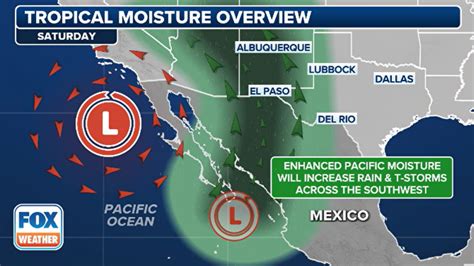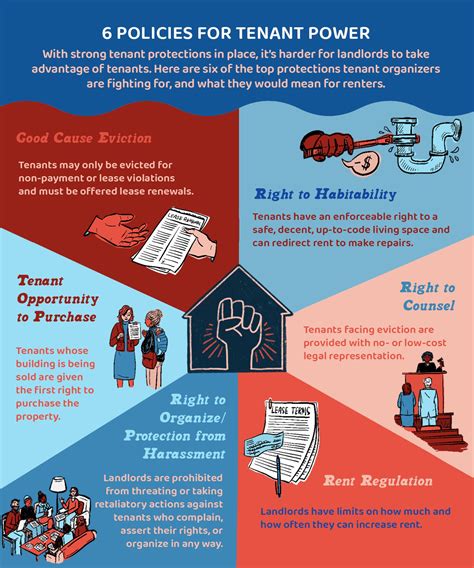
Remnants of Tropical Storm Alvin are poised to bring significant rainfall to the Desert Southwest, potentially easing drought conditions but also raising concerns about flash flooding and hazardous road conditions. The storm, which originated in the Pacific Ocean, is expected to impact areas across Arizona, New Mexico, and parts of Utah and Colorado, prompting advisories from weather officials urging residents to prepare for heavy downpours and possible travel disruptions.
The National Weather Service (NWS) has issued flood watches and warnings for several counties, highlighting the risk of rapid water accumulation in low-lying areas and near rivers and streams. “We’re looking at the potential for widespread rainfall across the Desert Southwest as the remnants of Tropical Storm Alvin move inland,” stated meteorologist Sarah Jones from the NWS Phoenix office. “While this rain is welcome news for drought relief, it also brings the risk of flash flooding, especially in areas with burn scars from recent wildfires.”
Alvin’s trajectory has shifted slightly eastward, leading to a broader area being placed under flood advisories. Rainfall totals are predicted to range from 1 to 3 inches in most affected areas, with isolated locations potentially receiving up to 5 inches. The heaviest rainfall is expected to occur between late Tuesday and early Thursday, creating a heightened risk during these periods.
The anticipated rainfall is particularly significant given the ongoing drought conditions plaguing the Desert Southwest. For months, the region has experienced below-average precipitation, leading to depleted reservoirs, stressed vegetation, and increased wildfire risk. While Alvin’s remnants won’t completely alleviate the drought, the rainfall will provide much-needed moisture to the soil and help replenish water sources.
However, the sudden influx of water also poses challenges. The dry, parched ground is less capable of absorbing water quickly, increasing the likelihood of runoff and flash flooding. Areas with burn scars are especially vulnerable, as the lack of vegetation allows water to flow rapidly downhill, carrying sediment and debris.
Authorities are urging residents to take precautions, including avoiding driving through flooded areas, securing loose objects, and monitoring weather updates. The Arizona Department of Transportation (ADOT) has issued warnings about potential road closures and hazardous driving conditions, advising motorists to reduce speed and increase following distance.
The agricultural sector in the Desert Southwest stands to benefit from the rainfall, as it will help replenish soil moisture and reduce the need for irrigation. However, farmers are also advised to take measures to protect their crops from potential water damage, such as ensuring proper drainage and avoiding over-saturation.
The impact of Alvin’s remnants extends beyond immediate rainfall. The increased humidity and cooler temperatures will provide a temporary respite from the intense heat that has characterized the summer months. This can help reduce energy consumption and improve overall comfort levels. Additionally, the rainfall will help suppress dust storms, improving air quality and visibility.
The long-term effects of Alvin’s remnants will depend on the amount and distribution of rainfall. If the rainfall is widespread and sustained, it could provide a significant boost to water resources and help alleviate drought conditions. However, if the rainfall is concentrated in localized areas, the benefits may be limited, and the risk of flash flooding could be exacerbated.
The weather patterns associated with Alvin’s remnants are also influencing weather conditions in other parts of the country. The storm system is drawing moisture from the Gulf of Mexico, contributing to increased humidity and potential for rainfall in the Southern Plains and Southeast. This highlights the interconnectedness of weather systems and the importance of monitoring tropical activity in the Pacific and Atlantic Oceans.
The remnants of Tropical Storm Alvin serve as a reminder of the dynamic nature of weather and the importance of preparedness. While the rainfall is a welcome relief for drought-stricken areas, it also brings the risk of flash flooding and other hazards. By taking precautions and staying informed, residents can minimize the potential impact of the storm and maximize the benefits of the rainfall.
The current situation underscores the need for comprehensive drought management strategies in the Desert Southwest. These strategies should include measures to conserve water, improve water infrastructure, and promote sustainable land management practices. By addressing the underlying causes of drought and preparing for future events, the region can build resilience and mitigate the impacts of climate change.
The arrival of Alvin’s remnants also highlights the role of weather forecasting in protecting lives and property. Accurate and timely weather information allows individuals and communities to make informed decisions and take appropriate actions to minimize risk. Continued investment in weather forecasting technology and research is essential to improving the accuracy and reliability of weather predictions.
In conclusion, the remnants of Tropical Storm Alvin are bringing much-needed rainfall to the Desert Southwest, offering a temporary reprieve from drought conditions. However, the potential for flash flooding and other hazards requires vigilance and preparedness. By staying informed, taking precautions, and implementing comprehensive drought management strategies, the region can navigate this weather event safely and build resilience for the future. The situation also serves as a reminder of the importance of weather forecasting and the need for continued investment in this critical field. The interplay between drought relief and flood risk management is a complex challenge that requires a multifaceted approach.
The impacts of climate change are exacerbating the challenges of drought and flooding in the Desert Southwest. As temperatures rise and precipitation patterns shift, the region is likely to experience more frequent and intense droughts, as well as an increased risk of extreme weather events. Addressing climate change is essential to mitigating these risks and ensuring the long-term sustainability of the Desert Southwest. This includes reducing greenhouse gas emissions, investing in renewable energy sources, and implementing adaptation measures to cope with the impacts of climate change. The region must also work to improve water management practices, such as increasing water storage capacity, promoting water conservation, and developing alternative water sources. By taking these steps, the Desert Southwest can build resilience to climate change and ensure a sustainable future for its communities and ecosystems. The current situation with Tropical Storm Alvin’s remnants underscores the urgency of these actions and the need for a comprehensive and coordinated response to the challenges of climate change. The storm’s impact on the region’s water resources will be closely monitored in the coming weeks and months, as officials assess the extent of drought relief and the potential for long-term benefits. The lessons learned from this event will be valuable in informing future drought management strategies and preparing for the challenges of a changing climate. The Desert Southwest faces a complex and uncertain future, but by working together and taking proactive steps, the region can build a more resilient and sustainable future for all.
Furthermore, the ecological impact of Alvin’s remnants deserves attention. The sudden influx of water can have both positive and negative effects on the region’s ecosystems. While the rainfall will benefit vegetation and wildlife, it can also lead to erosion, habitat destruction, and the spread of invasive species. Areas with burn scars are particularly vulnerable, as the lack of vegetation allows water to flow rapidly downhill, carrying sediment and debris. This can damage aquatic habitats and disrupt ecological processes. The long-term ecological consequences of Alvin’s remnants will depend on the amount and distribution of rainfall, as well as the management practices implemented in the aftermath of the storm. Careful monitoring of ecological conditions is essential to assessing the impacts of the rainfall and developing strategies to mitigate any negative effects. This includes monitoring water quality, assessing vegetation recovery, and controlling invasive species. By taking a proactive approach to ecological management, the Desert Southwest can minimize the potential for long-term damage and ensure the health and resilience of its ecosystems. The interplay between drought, flooding, and ecological health is a complex challenge that requires a holistic and integrated approach. The region must work to balance the needs of human communities with the needs of the environment, ensuring that both can thrive in the face of a changing climate. The current situation with Tropical Storm Alvin’s remnants underscores the importance of this balance and the need for sustainable management practices.
The economic implications of Alvin’s remnants are also significant. The rainfall will benefit agriculture, tourism, and other sectors, but it can also lead to economic losses due to flooding, road closures, and property damage. The agricultural sector stands to benefit from the replenished soil moisture, which can increase crop yields and reduce the need for irrigation. The tourism industry may also see a boost, as the cooler temperatures and improved air quality can attract visitors. However, flooding can damage crops, disrupt transportation, and cause property damage, leading to economic losses for farmers, businesses, and homeowners. The overall economic impact of Alvin’s remnants will depend on the severity of the flooding and the effectiveness of mitigation efforts. Authorities are working to minimize the economic impact of the storm by providing timely warnings, coordinating emergency response efforts, and assisting with cleanup and recovery. The long-term economic consequences of Alvin’s remnants will depend on the region’s ability to adapt to a changing climate and build resilience to future weather events. This includes investing in infrastructure improvements, promoting economic diversification, and developing strategies to mitigate the economic impacts of drought and flooding. By taking a proactive approach to economic development, the Desert Southwest can ensure a sustainable and prosperous future for its communities. The interplay between economic development, environmental sustainability, and climate resilience is a complex challenge that requires a collaborative and integrated approach. The region must work to balance the needs of its economy with the needs of the environment, ensuring that both can thrive in the face of a changing climate. The current situation with Tropical Storm Alvin’s remnants underscores the importance of this balance and the need for sustainable economic development practices.
The political and social dimensions of Alvin’s remnants are also important to consider. The storm can exacerbate existing inequalities and create new challenges for vulnerable populations. Low-income communities and marginalized groups are often disproportionately affected by flooding and other weather-related disasters. They may lack the resources to prepare for and recover from these events, and they may face barriers to accessing assistance and support. The political response to Alvin’s remnants can also have significant social consequences. Government policies and programs can either help or hinder the recovery process, and they can either exacerbate or alleviate existing inequalities. It is important for policymakers to consider the social and political dimensions of the storm and to ensure that their actions are equitable and just. This includes providing targeted assistance to vulnerable populations, promoting community-based solutions, and engaging with affected communities in the decision-making process. By taking a proactive and inclusive approach to disaster response, the Desert Southwest can build stronger and more resilient communities. The interplay between political action, social justice, and disaster resilience is a complex challenge that requires a commitment to equity and inclusion. The region must work to ensure that all members of its communities have the resources and support they need to thrive in the face of a changing climate. The current situation with Tropical Storm Alvin’s remnants underscores the importance of this commitment and the need for a just and equitable response to the challenges of climate change.
Frequently Asked Questions (FAQ)
1. What areas are expected to be most affected by the remnants of Tropical Storm Alvin?
The Desert Southwest, including Arizona, New Mexico, and parts of Utah and Colorado, are expected to be most affected. The National Weather Service has issued flood watches and warnings for several counties in these states, highlighting the risk of rapid water accumulation in low-lying areas and near rivers and streams. Specific areas with burn scars from recent wildfires are particularly vulnerable to flash flooding.
2. How much rainfall is predicted, and what are the potential risks associated with it?
Rainfall totals are predicted to range from 1 to 3 inches in most affected areas, with isolated locations potentially receiving up to 5 inches. While this rain is welcome news for drought relief, it also brings the risk of flash flooding, especially in areas with burn scars. The dry, parched ground is less capable of absorbing water quickly, increasing the likelihood of runoff.
3. How will the rainfall impact the ongoing drought conditions in the Desert Southwest?
The rainfall will provide much-needed moisture to the soil and help replenish water sources, offering a temporary reprieve from the ongoing drought conditions. While it won’t completely alleviate the drought, it will contribute to improved soil moisture levels and potentially increase reservoir levels, offering some relief to stressed vegetation and reducing wildfire risk. The long-term impact will depend on the amount and distribution of rainfall.
4. What precautions should residents take to prepare for the storm and potential flooding?
Residents should take precautions such as avoiding driving through flooded areas, securing loose objects, and monitoring weather updates. The Arizona Department of Transportation (ADOT) has issued warnings about potential road closures and hazardous driving conditions, advising motorists to reduce speed and increase following distance. It’s also important to have an emergency supply kit prepared.
5. What are the long-term implications of this storm, and how does it relate to climate change in the region?
The long-term effects will depend on the amount and distribution of rainfall. If widespread and sustained, it could significantly boost water resources and help alleviate drought. However, if concentrated in localized areas, the benefits may be limited, and flash flood risks could be exacerbated. The storm also highlights the increasing challenges of drought and flooding in the Desert Southwest due to climate change. As temperatures rise and precipitation patterns shift, the region is likely to experience more frequent and intense droughts, as well as an increased risk of extreme weather events, underscoring the need for comprehensive climate resilience strategies.









